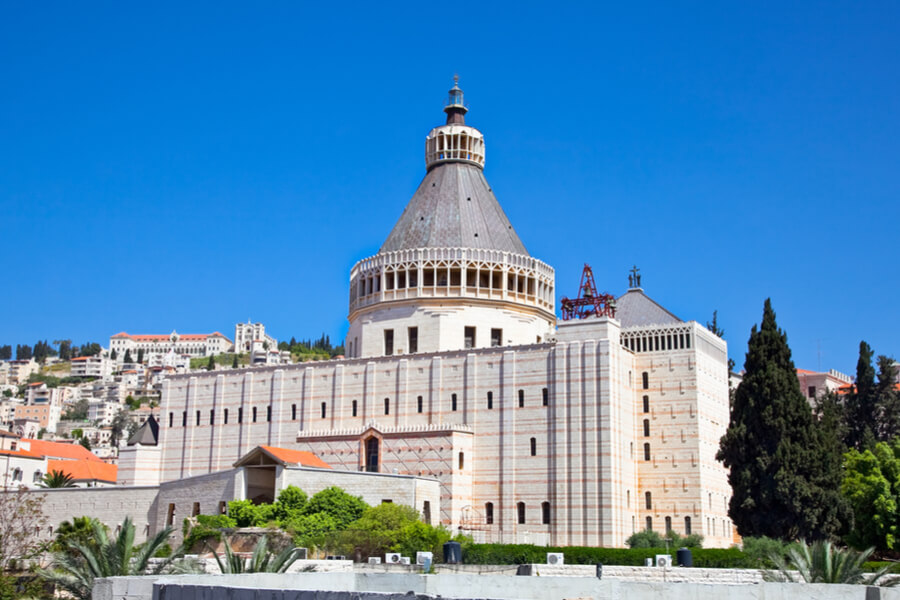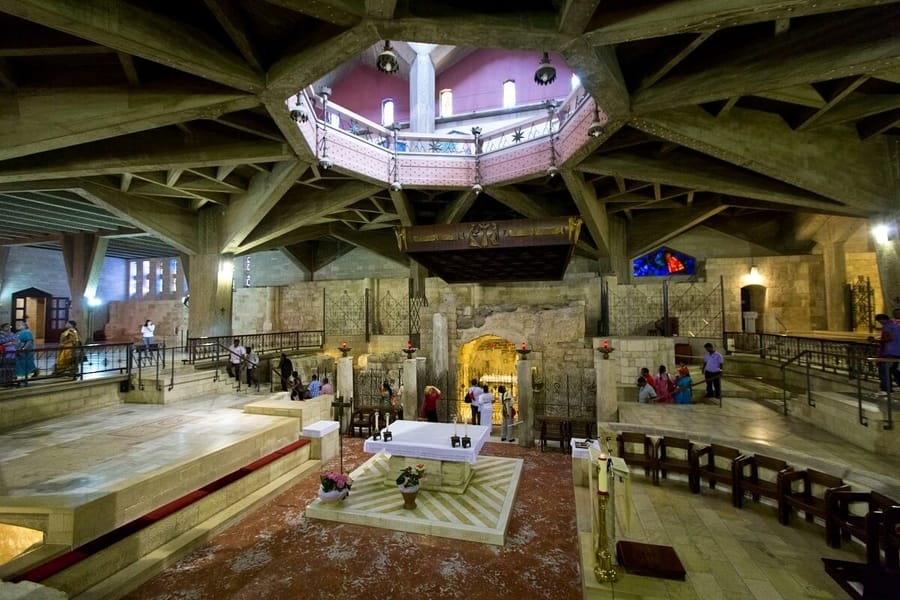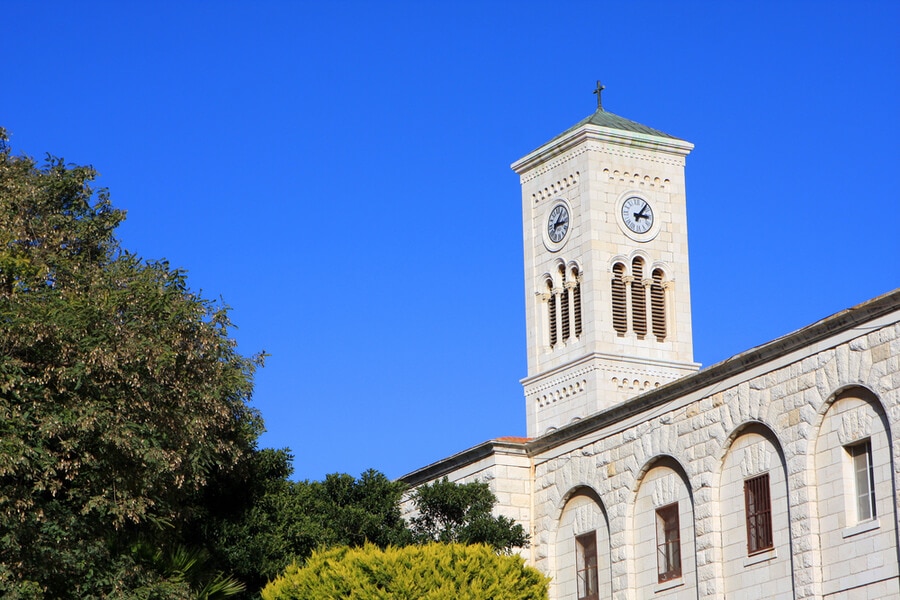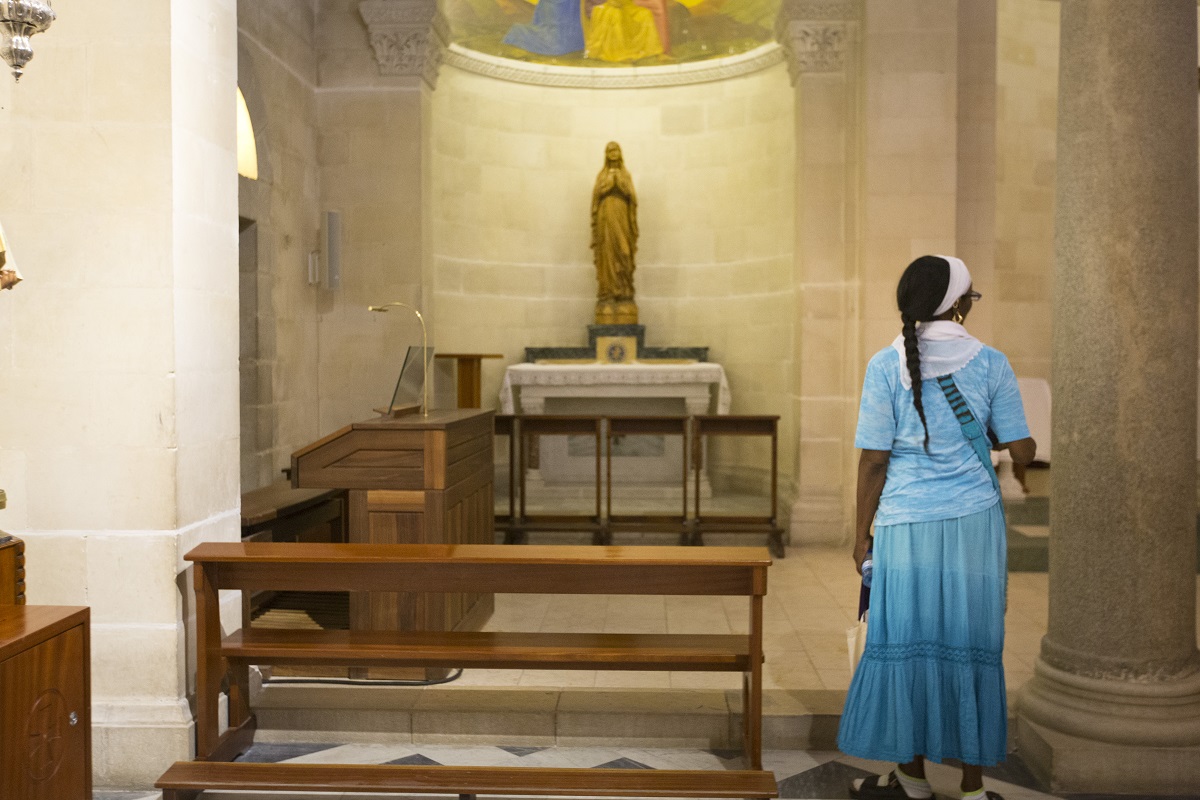Nazareth the City
The modern-day city of Nazareth is the largest and capital city of Northern Israel. It is known as the Arab capital of Israel as the population is predominantly Muslim and Christian Arabs. Alongside Nazareth is Nazareth Illit with a predominantly Jewish population. However it is not modern-day Nazareth that attractions tourists to the city but the ancient biblical history. Nazareth is named in the New Testament as the hometown of Mary and Joseph and later as the town where Jesus spent his childhood. For this reason Nazareth has been a major Christian pilgrimage destination since the 6th century Byzantine era.

Annunciation Church, Nazareth. Photo credit: © Shutterstock
Nazareth in the New Testament
The Gospel of Luke tells us that Nazareth was the hometown of Mary and the site of the Annunciation where the Angel Gabriel appeared before her and told Mary of her future son (Luke 1:26). After Jesus was born in Bethlehem and a short sojourn in Egypt the Gospel of Matthew tells us that Joseph, Mary, and Jesus settled in Nazareth. It was here that Jesus spent his childhood.
Top Nazareth Attractions
Ever since the biblical sites of Nazareth were identified in the 4th century Christians have built churches to mark these locations. The most important biblical locations in Nazareth are the sites of the Annunciation and the place believed to be where the Holy family lived.Basilica of the Annunciation
Nazareth’s top attraction is this magnificent church built on the site of Mary’s childhood home where Roman Catholics believe the Annunciation took place. A Christian altar was built on this site as early as the 4th century and since then a Byzantine and Crusader church has stood here. The church had a rough history as it was destroyed several times and Christian access was routinely denied or they were charged a fee to visit the holy site.
Basilica of Annunciation in Nazareth, Israel. Photo credit: © Shutterstock
Finally, in 1730 ruling sheik Zahir al-Umar allowed the Franciscans to build a church on the site of Mary’s childhood home, the site of the Annunciation. This church survived until 1955 when it was taken down to make way for a new, larger church constructed in 1967.Visitors to the Church of the Annunciation can see the remains of earlier Byzantine and Crusader churches as well as the excavated 1st-century dwelling believed to have been Mary’s childhood home and the site of the Annunciation.
The Church of the Annunciation has two levels; the lower level holds the excavated 1st century remains while the upper level is used as a parish church. The Basilica is topped by an unusual cement dome. One of the features of the church is a collection of mosaics from Christian communities around the world depicting Mary and baby Jesus. The church is the largest in the Middle East.

The interior of Annunciation Church, Nazareth. Photo credit: © Shutterstock
Church of St. Gabriel (Greek Orthodox Church of the Annunciation)
In the 6th century, the Greek Orthodox Church of the Annunciation was built near Mary’s Well over Mary’s Spring that feeds the Well. Greek Orthodox believe that the Annunciation took place here as Mary was fetching water. This is the Greek Orthodox alternative to the Catholic Church of the Annunciation. The present church was built in 1750.Visitors can still see Mary’s Spring running beneath the church altar. In the upper part of the church, there is a magnificent carved and painted wooden iconostasis from 1767. The Chapel of the Spring dates back to 1750 and features a barrel-vaulted roof and colorful marble and glazed ceramics.
St Joseph's Church
The Church of St Joseph is perhaps Nazareth’s second most popular attraction. It stands alongside the Catholic Church of the Annunciation and commemorates the site of the Holy family’s home and Joseph’s workshop. Beneath the church are the excavated remains of a 1st-century dwelling thought to have been Joseph’s workshop and the Holy family home. the present church was built in 1914 on the site of an earlier Crusader church.
St. Joseph's Church, Nazareth. Photo credit: © Shutterstock
Mary’s Well
The natural spring that feeds Mary’s Well is believed to have been where Mary would have gone to collect water for her family. Today the Well is a public fountain covered by a reconstruction of a 19th-century structure.
Synagogue Church
Jesus returned to Nazareth twice during his ministry in Galilee. He taught in the Nazareth synagogue and it was here that he outraged worshipers by announcing his ministry and declaring himself the Messiah. The crowd chased Jesus to the top of a hill where they intended to throw him off a cliff but he miraculously disappeared. This hill is known today as Mount Precipice, or the “Hill of the Leap” located about 3km south of Nazareth. (Luke 4:16-30). The Church of Our Lady of the Fright marks the site where Mary stood as she watched Jesus attacked by the crowd.
The synagogue where Jesus prayed is now marked by a Crusader-era Melkite Greek Catholic Church (Synagogue Church). Other Nazareth sites include the Coptic Church of the Annunciation; the Mensa Christi Church (1781); Basilica of Jesus the Adolescent, a large church overlooking the city from a hilltop; Nazareth Village, a recreated 1st-century village as Nazareth would have been in Jesus’ lifetime; the Anglican Christ Church; the White Mosque, the oldest mosque in the city; the gold-domes Maqam al-Nabi Saeen Mosque and the excavated Ancient bath House.
To see the biblical sites of Nazareth join the Nazareth and Sea of Galilee tour.

Tower of the St. Joseph's Church in the Old City of Nazareth. Photo credit: © Shutterstock
 Login / Register
Login / Register
 Contact Us
Contact Us

 Certificate of Excellence
Certificate of Excellence Guaranteed Departure
Guaranteed Departure Low Prices Guaranteed
Low Prices Guaranteed 24/7 Support
24/7 Support




